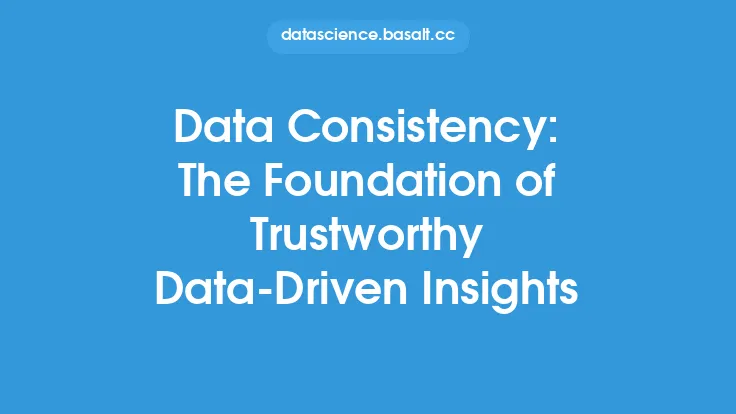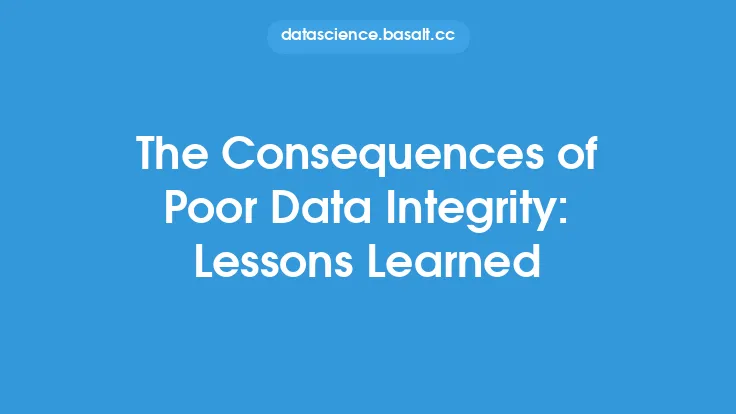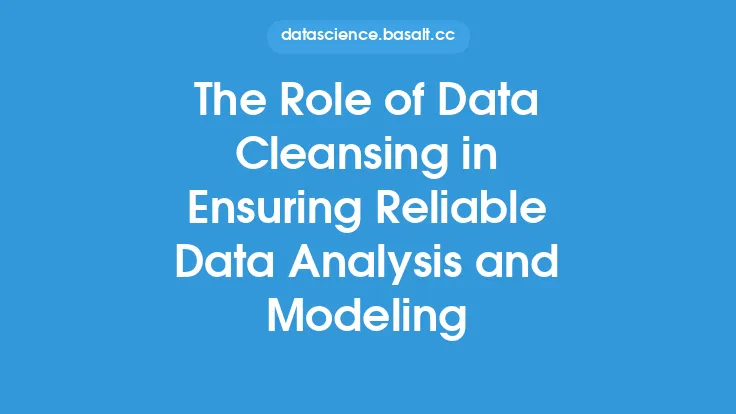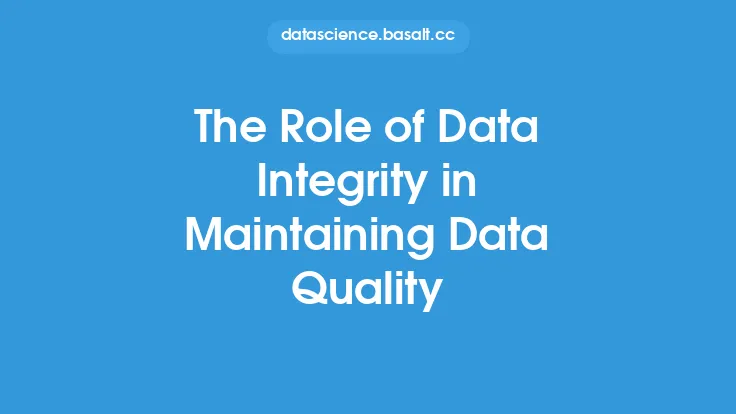Data integrity is the foundation upon which reliable data analysis is built. It refers to the accuracy, completeness, and consistency of data, as well as its adherence to defined rules and constraints. In other words, data integrity ensures that data is trustworthy, reliable, and free from errors or inconsistencies that could compromise its usefulness. This concept is crucial in today's data-driven world, where organizations rely on data to inform business decisions, optimize operations, and drive innovation.
What is Data Integrity?
Data integrity is a multifaceted concept that encompasses several key aspects, including data accuracy, data completeness, data consistency, and data validity. Data accuracy refers to the degree to which data reflects the true values or facts it is intended to represent. Data completeness, on the other hand, refers to the extent to which data includes all the necessary information or values. Data consistency ensures that data is consistent across different systems, applications, or datasets, while data validity ensures that data conforms to defined rules, formats, or constraints.
Types of Data Integrity
There are several types of data integrity, including entity integrity, referential integrity, and domain integrity. Entity integrity ensures that each row or record in a database or dataset is unique and identifiable. Referential integrity, on the other hand, ensures that relationships between different data entities or tables are consistent and valid. Domain integrity ensures that data values fall within defined ranges or formats, such as date or time formats.
Importance of Data Integrity
Data integrity is essential for reliable data analysis because it ensures that data is trustworthy and accurate. Without data integrity, organizations risk making decisions based on flawed or incomplete data, which can have serious consequences. For instance, a company that relies on inaccurate sales data may make poor investment decisions or fail to identify new business opportunities. Similarly, a healthcare organization that relies on incomplete or inconsistent patient data may compromise patient care or safety.
Data Integrity Constraints
Data integrity constraints are rules or restrictions that are applied to data to ensure its accuracy, completeness, and consistency. These constraints can be implemented at various levels, including the database level, application level, or data warehouse level. Common data integrity constraints include primary keys, foreign keys, unique constraints, and check constraints. Primary keys ensure that each row or record in a database is unique, while foreign keys ensure that relationships between different tables are consistent. Unique constraints ensure that data values are unique, while check constraints ensure that data values conform to defined rules or formats.
Data Integrity Techniques
Several techniques can be used to ensure data integrity, including data validation, data normalization, and data cleansing. Data validation involves checking data against defined rules or constraints to ensure its accuracy and completeness. Data normalization involves transforming data into a standardized format to ensure consistency and reduce data redundancy. Data cleansing involves identifying and correcting errors or inconsistencies in data to ensure its accuracy and reliability.
Data Integrity Tools
Several tools and technologies can be used to ensure data integrity, including data quality software, data governance platforms, and data validation tools. Data quality software can be used to monitor and improve data quality, while data governance platforms can be used to define and enforce data policies and standards. Data validation tools can be used to check data against defined rules or constraints and ensure its accuracy and completeness.
Best Practices for Ensuring Data Integrity
Several best practices can be followed to ensure data integrity, including defining clear data policies and standards, implementing data validation and data cleansing procedures, and monitoring data quality regularly. Organizations should also establish clear data governance structures and procedures to ensure that data is managed and maintained consistently across different systems and applications. Additionally, organizations should provide training and support to employees to ensure that they understand the importance of data integrity and how to maintain it.
Challenges to Data Integrity
Several challenges can compromise data integrity, including data entry errors, data migration errors, and data corruption. Data entry errors can occur when data is entered manually or through automated processes, while data migration errors can occur when data is transferred from one system to another. Data corruption can occur due to hardware or software failures, viruses, or other malicious activities. To overcome these challenges, organizations should implement robust data validation and data cleansing procedures, as well as regular data backups and disaster recovery procedures.
Conclusion
In conclusion, data integrity is a critical aspect of data quality that ensures the accuracy, completeness, and consistency of data. It is essential for reliable data analysis and decision-making, and its importance cannot be overstated. By understanding the concepts, types, and importance of data integrity, as well as the techniques, tools, and best practices for ensuring it, organizations can maintain high-quality data and make informed decisions that drive business success.





